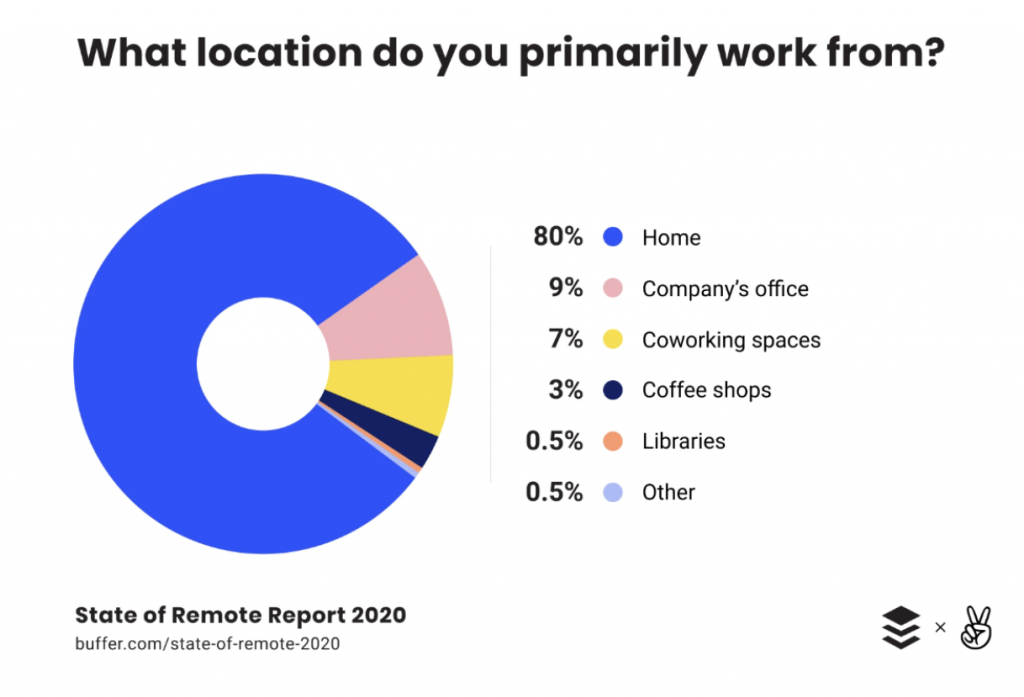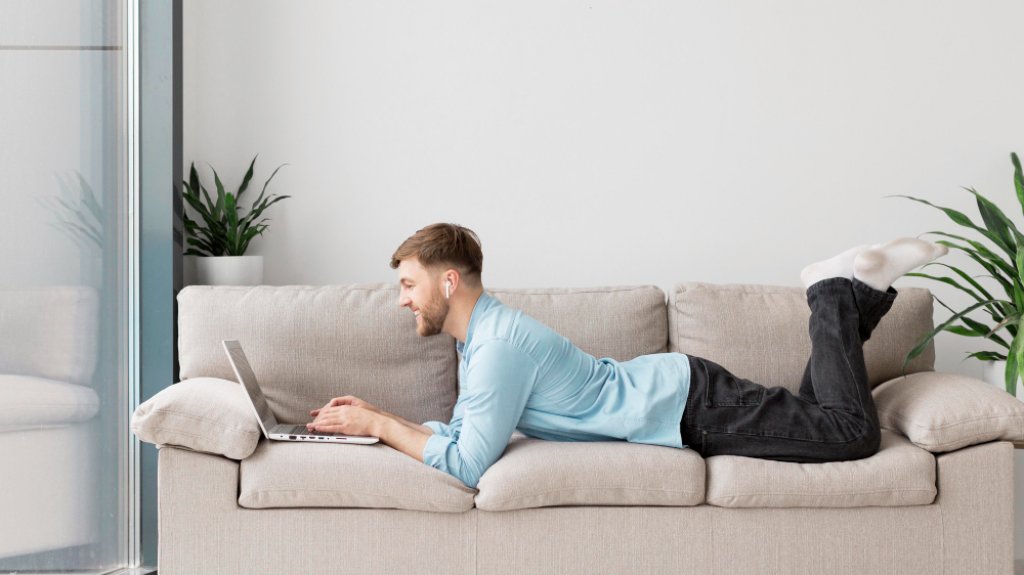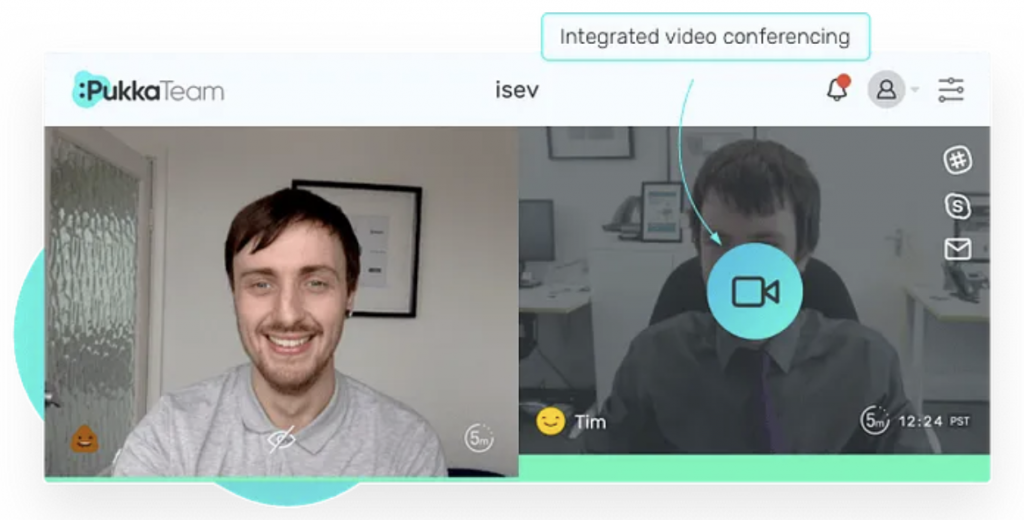(4 Essentials You Need To Cover)
TL;DR
Choose the best location
Get the right equipment
Invest in the essential software
Personalise your space
Remote work is on the rise, with more and more people looking for jobs that provide more flexibility than being confined to working in an office. This allows us to work where that’s most convenient and comfortable for us, helping us be more productive.
But where do we actually end up when we work remotely?
According to the state of remote work 2022, we overwhelmingly tend to work from home.
80% of us prefer the comfort of our own home!
If we think about it, this makes sense. It means there is no commute at all and it’s where we have the most control over our working environment.
But there’s more to a productive work environment at home than simply rolling out of bed and switching on our laptops. When working from home, there are certain considerations that need to be taken into account.
Why is a proper home office set up important?
A lot of the time when we tell people we work remotely from home, they instantly envision us sitting with our laptop in bed in our pyjamas, or sprawled across the sofa in front of the TV.
This might seem like an ideal lifestyle, the freedom to work how you want, where you want, but in reality, working like this, isn’t that comfortable.
Though this may be something we do from time to time, it’s not comfortable or ideal for an entire workday and certainly won’t be something we do on a day to day basis.
We’re also probably aware that pyjamas don’t look great on a video call 😂. So a little thought needs to be put into our work environments at home, to ensure we’re presentable and as productive as possible.
To begin with, we need to…..
Choose the Right Location
This might not seem like a big deal, but it plays a more important role than it might initially appear. The first thing we’ll want to do is pick somewhere that’s away from distractions.
If there are going to be people around during your workday, you want to avoid common areas like the kitchen, as these will likely have the hustle and bustle of people using the facilities. The living room is another one that’s not ideal either, even if you’re home alone, there’s the obvious distraction of the TV.
You’ll want to choose somewhere quiet, away from the noise of the household, as this can be distracting and a lot of background noise is not ideal when on video calls — especially when talking to clients.
We want to pick somewhere with natural light. Lighting is important in helping us concentrate and helps prevent us getting a headache from looking at the screen. Preferably the room we choose will have blinds on the window, to reduce screen glare.
Bonus tip: Pick somewhere separate from where you’d spend your personal time outside of work hours. It’s important to separate your home and work life and be able to feel like you’ve ‘left the office’ at the end of the workday.
The (Physical) Equipment We’ll Need
Now that we’ve picked where we’ll work, we now need the right equipment, things like a decent internet connection and laptop should (hopefully) go without saying.
But what else do we need?
For starters, a comfortable chair, you’ll very likely be sitting for the majority of your day, and being uncomfortable will make a huge difference to our productivity.
A desk or table to work at, ideally, your chosen location will have one of these in. If not, you will want to avoid having a laptop on your lap the entire day, as you’ll end up looking down at the screen, which can cause neck problems.
Having a quality headset and microphone is essential. When on a video call with clients or colleagues, there’s nothing worse than not being able to hear people properly, or for your voice to be distorted when talking to others.
If you work on a laptop, it might be a good idea to get a monitor to accompany it. This is for two fundamental reasons:
1. Laptop screen sizes. These are generally fairly small, normally maxing out at 18 inches. The size can also be a hindrance if we need multiple programs and windows open. The extra screen real-estate a monitor gives provides a better viewport for our work and helps us organise our apps more efficiently.
This is an example of my desktop setup, it makes it a lot easier to manage and organise everything when I’ve got two screens.
That’s right, you caught me listening to some Dethklok :P
2. Screen positioning. We ideally want our screen to be at eye level, what we want to avoid is looking down at the screen. A monitor gives us more flexibility with the viewing position.
Having a pen and paper handy is always a smart idea in case you need to write something down. Sometimes it can be simpler to write a quick note or idea down than making notes on our computers.
Finally, we want to have a plant in our home office.
Why you say?
Having plants around while working has been shown to increase productivity by 15%, as well as significantly increase workplace satisfaction!
Bonus tip: for any equipment, where you can — go for ergonomics. Having an ergonomic chair for example, will help you be more comfortable and allow you to adjust it, it also means you will reduce the possibility of RSI or injury.
Personalisation
Your workspace should reflect who you are. Adding personal touches to your workspace can make it feel more comfortable and welcoming, which can increase your happiness and overall productivity.
One study found that ‘Personalising your workstation can help you function better at work, which in turn will lead to improvement.’ Adding photographs, plants, or artwork can help bring your workspace to life and make it more personalised.
You can use accessories to personalise your desk. This can be a fun way of making that space your own. Some ways you can personalise your desk include:
Add a nice jar to hold all of your pens and stationary.
You could include a fun coaster for your drinks (Ours are Star Wars themed)
A personal mouse mat (maybe it's your favourite colour, or maybe it’s got a photo from a show you love!)
If they help you concentrate, you could bring some fidget toys!
A photograph of your family (Yes, this includes pets)
A favourite keyboard or mouse.
The main takeaway is to make sure that everything on your desk is functional. While including lots of things may look nice you don’t want to clutter your desk. Afterall, a cluttered space is a cluttered mind!
Essential Software
Each team is different and will require certain types of software. So we’ll make a short list of some of the essentials that every remote team should have.
To begin with, if you want software to minimise distraction while you’re at work, you may have to set your office away from the TV and those pesky other people that might be in your home. But that doesn’t stop you from checking your social media every 10 minutes or switching to Youtube to check the latest videos, or Steam accounts to play a little Binding of Isaac.
Some of us will have the willpower and avoid distractions.
For those of us that might not be able to do this, an app like Stay Focused lets us restrict the apps/websites during work hours, letting us concentrate on our work.
Now, have you ever found that when looking at a screen that it emanates slight blue light?
Because we generally use our PC’s during the day, this helps our eyes from getting strained by reflecting the brightness we naturally see outside. If you, however, are more nocturnal in your work habits, this can cause eye strain and headaches.
F.lux, is a fantastic free app that adjusts your screen lighting depending on the time of day, to minimise the potentially harmful effects of blue light from the screen. During the evenings for example it changes to a warmer glow.
Every remote team needs a quality video calling app. It allows us to talk with colleagues and meet with clients from the comfort of our homes, and provide the personal/visual touch that phone calls can’t.
For the times when we want to ask a colleague a quick question, where a calling feels a bit too excessive, an instant messaging app helps you have conversations, in a way that’s less disruptive.
Lastly, email, everyone needs to have email. We use it for all other communication, with both colleagues and clients. (I’m hoping that this one mostly speaks for itself 😂)
Bonus tip: If you want to feel more connected to your team, use our app PukkaTeam (free 14 day trial!). It lets you see your team throughout the day, feel more connected, and makes contacting them super easier, with its quality, in-built video calling software we talked about.
Start getting your perfect home office set up!
Setting up a proper space to work from home doesn’t need to be hard work, it just takes a little forethought.
What are your tips for how to pick the best place to work from home? Let us know in the comments or share a picture of your workspace with us on Twitter!


 Form the Blog
Form the Blog



